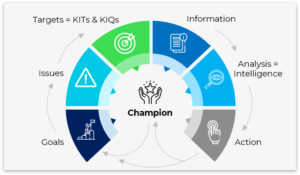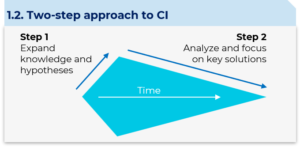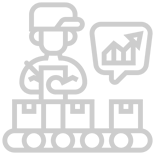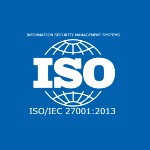The Truth is Out There – the Competitive Intelligence Mantra
Posted by | Michael Ratcliffe
For those of you who remember the X-Files (it was a show about extra-terrestrial life), the tagline for the show was “The truth is out there”. This is also the mantra for competitive intelligence. We aren’t seeking to discover whether superior life forces exist, but we are looking to uncover real impact issues for our business and create action plans to address them.
We commonly face questions that our clients find hard to answer. These can apply to competitors, markets, customers, products, channels, and more. We hear things like “I don’t know what I don’t know” or “We know something is going on but we’re not sure what”. Yet what we do know for certain is that answers are needed to move forward with plans to achieve our goals. So, what is next?
To start, we need to set a logical direction for higher learning and understanding. Therefore, we develop a hypothesis or hypotheses to investigate.
Hypothesis Investigation
This first step is critical and sets things in motion; by definition, a hypothesis is meant to be tested, validated, and challenged. Only once you begin down the path of conducting research will you learn how well your hypothesis holds up, but you may also realize that your hypothesis requires rethinking.
In competitive intelligence (CI) we are truth seekers and sometimes the truth is different from what we think we know. Diagram 1.1 below shows a standard CI approach, with the first few steps providing the foundation for developing a research plan.
1.1. Standard approach to CI

It is easy to stop here, conduct some research and conclude one’s initial hypothesis. However, this can omit the possibility that one hypothesis may not be correct. It’s therefore critically important for a CI specialist to question the initial hypothesis and identify if other hypotheses need should be explored. This is illustrated in our second diagram, 1.2 with a two-step process. First, think about expanding your knowledge about the issue, which may force you to develop additional hypotheses. Second, research all of them with the goal of focusing on one key solution.
Unvetted information can trigger a reaction that can lead you down an intelligence rabbit hole. Not every snippet of intelligence, whether from your salespeople or the CEO, necessarily conveys what is really happening, nor should it be taken at face value. Remember not to jump in with both feet without questioning whether the initial hypothesis was correct.

Understand Better with an Example
Here is a case study to illustrate this process. A client asked Fuld to identify when a new delivery device for a competitor’s drug was going to be launched as the rumor that was communicated through the sales force was that it would happen within the next 6 months. We initially talked to salespeople who confirmed this, but when we spoke to marketing managers in the competitor’s headquarters, we heard that the launch was being delayed for a year. It would have been easy to take either of these answers as the truth, but the discrepancy was too large to ignore and challenged the original hypothesis that the device was simply delayed by a few months.
Given the new information, Fuld undertook deep research to discover that the company manufacturing the device was likely to go bankrupt. This immediately created several additional hypotheses as to what the competitor might do. Upon vetting these different hypothetical options, our conclusion was that the launch was being delayed by at least 2 years, not the 6 months or 1 year we originally heard.
This intelligence was extremely valuable to the client, who now knew with certainty that they would not be faced with a new competitive threat for a significantly longer period than was rumored and could therefore maximize their marketing strategy to full advantage.
Facts can be elusive and competitive threats may be near or far depending on who you ask. Allow for flexibility in your process and accept that things aren’t always as they may seem. Remember, the truth is out there.
How Can Fuld & Company Help?
At Fuld, we train our experts to look for sets of intelligence that conflict as these could be pointing to underlying issues that require further investigation. Our process allows for changes in direction and adjustments as we collect and analyze research that may suggest a different view or reality for our clients to consider. This flexibility ensures that we get to the heart of an issue so that our clients can take proper action with confidence in the results.
To learn more about our solutions please contact us at Fuld & Company – Delivering Competitive Intelligence.
Tags: CI Process, Competitive Advantage, Competitive Intelligence



















